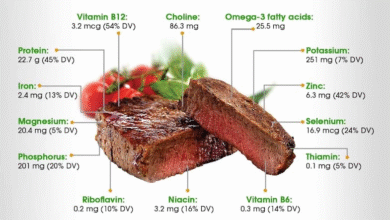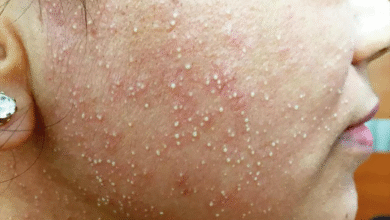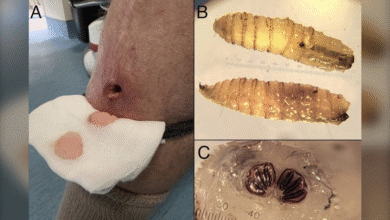Parkinson’s Disease and Golf Courses: A Hidden Danger

Parkinson’s disease and golf courses might not seem related at first glance, but recent research has unveiled a concerning connection. Studies indicate that individuals living near golf courses face heightened risks of developing Parkinson’s disease, particularly due to potential pesticide exposure. The Barrow Neurological Institute, in collaboration with the Mayo Clinic, found that residents within three miles of these recreational areas could be significantly affected by pesticide application, raising questions about golf course health risks. Dr. Brittany Krzyzanowski, who led the study, highlighted the alarming increase in Parkinson’s disease prevalence among those in municipal water service areas where golf courses are common. As we delve deeper into this topic, it becomes crucial to understand the implications of living near such facilities and the environmental factors at play.
The correlation between Parkinson’s disease and nearby golfing facilities has garnered attention, revealing a potential public health risk. Research illustrates that proximity to these leisure spaces may elevate the likelihood of developing Parkinson’s, especially with the influence of chemical exposures like residential pesticide risk. Insights into this phenomenon are being explored through comprehensive studies that examine health implications for residents in close quarters to golf courses. Some statistics indicate a dramatic rise in conditions related to environmental factors, including toxins commonly found in agricultural practices associated with golf course maintenance. As these discussions unfold, understanding the broader implications of golf course management on community health remains vital.
The Link Between Golf Courses and Parkinson’s Disease Risk
Recent research indicates a troubling connection between living near golf courses and an elevated risk of developing Parkinson’s disease. A notable study conducted by the Barrow Neurological Institute and the Mayo Clinic found that individuals residing within one to three miles of a golf course had a significantly higher likelihood of developing this debilitating neurological disorder. Specifically, for those living within one mile, the risk increased by an alarming 126%. This correlation suggests that environmental factors directly linked to golf courses, particularly pesticide exposure, may play a critical role in the prevalence of Parkinson’s disease.
The implications of these findings are profound. Dr. Brittany Krzyzanowski, the lead author, highlighted that the strongest associations were found in municipal water service areas near golf courses. This raises concerns about the potential health risks posed by pesticide applications in these regions, especially where groundwater may be vulnerable due to geological factors. While the study emphasizes the need for caution, it also triggers a broader conversation about how pesticide use in residential areas can impact community health, particularly for aging populations who may be more susceptible to such environmental hazards.
Understanding Pesticide Exposure and Parkinson’s Disease
Pesticide exposure has long been a concern for public health, particularly in contexts like residential areas near golf courses. Living in proximity to these landscapes not only raises the risk of physical exposure but also introduces various health hazards linked to long-term pesticide application. Research indicates a potential association between residential pesticide risk and the development of neurological conditions, including Parkinson’s disease. As the recent study shows, individuals living close to golf courses are at a heightened risk, emphasizing the importance of understanding the mechanisms through which pesticides influence health outcomes.
Moreover, previous studies have established a connection between specific pesticides and neurological disorders, reinforcing the need for further investigation into the effects of chemical exposure over time. Although regulations govern the use of pesticides in golf course management, questions remain regarding their long-term impact on both the environment and community health. Understanding the long-term effects of exposure, particularly in areas with high pesticide usage, is crucial in addressing the growing concern over Parkinson’s disease prevalence in at-risk populations.
In light of evolving research, awareness and education about pesticide safety are key. Residents living near golf courses should be informed about the potential risks and encouraged to support efforts aimed at safer pesticide practices. A broader push for sustainable, organic golf course management could mitigate health risks associated with pesticide exposure, benefiting not only golfers but also neighboring communities.
Environmental Factors Influencing Parkinson’s Disease Prevalence
The environment plays a crucial role in determining health outcomes, particularly concerning chronic diseases such as Parkinson’s disease. The recent study linking golf courses and pesticide exposure to a higher risk of developing Parkinson’s highlights the urgent need to understand these environmental influences better. Factors such as location, proximity to chemical application sites, and the type and frequency of pesticide exposure can determine the overall health of communities residing near golf courses. As per the findings, those living in areas closer than one mile faced nearly double the risk compared to individuals located further away.
Researchers are now keen on exploring other environmental determinants that may affect the prevalence of Parkinson’s disease. This includes examining soil and water quality in residential areas adjacent to golf courses, as well as the presence of endocrine disruptors and other harmful chemicals. Furthermore, this growing body of research points to a potential need for policy changes regarding pesticide application regulations to safeguard local communities from neurotoxicants associated with gardening and landscaping.
Insights from the Parkinson’s Disease Study
A comprehensive analysis of 419 patients diagnosed with Parkinson’s disease reveals critical insights into the disease’s risk factors associated with golf courses and pesticide exposure. Conducted in cooperation with the Rochester Epidemiology Project, this study provided a robust dataset comparing afflicted individuals with control subjects. The timing and nature of the data gathered from various locations offer a unique lens through which to view the connections between environmental factors and disease incidence. The findings prompt an important dialogue about preventive measures and health education for residents near golf courses.
However, researchers acknowledged limitations in their study, pointing out that they did not directly measure the levels of pesticide exposure or consider variables such as genetic predisposition. Such omissions underscore the complex nature of Parkinson’s disease and the myriad factors that contribute to its development. Future studies are needed to bridge these gaps, providing a more comprehensive understanding of how lifestyle and environmental factors intertwine in the context of neurological health.
The Role of Golf Course Management in Public Health
Golf course management plays a pivotal role in determining not only the quality of the golfing experience but also the health of local communities. With findings suggesting a correlation between golf courses and an increased risk of Parkinson’s disease due to pesticide exposure, superintendents are called to consider sustainable management practices. This means exploring alternatives to traditional pesticide use, including organic or integrated pest management options that reduce chemical dependencies.
Additionally, the Golf Course Superintendents Association of America has acknowledged the need for adaptive protocols in maintaining golf courses without compromising community health. Collaborative efforts between golf course management and public health officials can lead to innovative strategies that prioritize safe recreational spaces while minimizing environmental impact. By adopting eco-friendly practices, golf courses can emerge as leaders in promoting community health and sustainability.
Future Research Directions in Parkinson’s Disease and Environmental Health
As the link between environmental factors and Parkinson’s disease gains traction, future research must expand on the initial findings connecting pesticide exposure to higher disease prevalence. Continued investigation is needed to explore the biological mechanisms through which pesticides may contribute to neurodegeneration over time. This includes studying specific pesticides utilized in golf courses and examining their long-term effects on human health, particularly within vulnerable populations residing nearby.
In addition, researchers should prioritize the design of longitudinal studies that can track the health outcomes of individuals living in close proximity to golf courses. Such studies could help illuminate the potential cumulative effects of exposure to pesticides and other environmental risks. By fostering collaborations between environmental scientists, neurologists, and epidemiologists, we can create a cohesive body of work that elucidates how golf course-related environmental factors might influence Parkinson’s disease and other neurodegenerative conditions.
Community Awareness and Prevention Strategies
Increasing community awareness about the health risks associated with living near golf courses is vital in addressing the potential impacts of pesticide exposure. Educational campaigns that inform residents about the findings of the recent study can empower individuals to take proactive measures in protecting their health. Knowledge of the risks associated with pesticide applications allows residents to advocate for safer management practices in their local golf courses.
Moreover, community-driven initiatives to monitor pesticide use and promote organic alternatives could play a crucial role in reducing health risks. Through collaboration with local health departments and environmental organizations, initiatives could be developed that focus on educating golfers and residents alike about minimizing exposure and recognizing early symptoms of Parkinson’s disease. Ultimately, a well-informed community is better equipped to engage in preventative strategies that safeguard public health.
The Impact of Policy Changes on Golf Courses and Health
The findings regarding the relationship between golf courses, pesticide exposure, and Parkinson’s disease prevalence may catalyze significant policy changes at local and national levels. Policymakers could consider regulating the type and amount of pesticides applied in residential areas, particularly those immediately adjacent to golf courses. This is essential for protecting residents from potential health risks and promoting a healthier environment for all.
Additionally, encouraging golf courses to adopt environmentally sustainable practices could set a precedent for responsible land management. Incentives for courses to transition away from harmful pesticides could promote better health outcomes and highlight the importance of protecting environmental integrity. Closer oversight of pesticide applications in recreational areas would serve as a critical step toward ensuring that golf courses do not compromise community health.
Adopting Safer Alternatives in Golf Course Management
Adopting safer alternatives to traditional pesticide applications on golf courses is a promising approach to mitigating health risks. Golf course managers can explore integrated pest management (IPM) strategies that emphasize preventive measures, such as habitat modification and mechanical controls, before resorting to chemical solutions. These practices not only help to reduce pesticide exposure but also promote ecological balance, fostering healthier environments for wildlife and local residents alike.
By investing in research and development of organic alternatives, golf courses can minimize their reliance on synthetic chemicals that may pose health hazards. Collaborations with universities, environmental organizations, and health experts can facilitate the implementation of sustainable practices, ultimately benefiting both golfers and neighboring communities. As public awareness continues to grow regarding the health implications of pesticide use, proactive measures in golf course management will be essential in fostering safer recreational environments.
Frequently Asked Questions
What is the connection between Parkinson’s disease and golf courses based on recent studies?
Recent studies, including one from the Barrow Neurological Institute, indicate a potential link between living near golf courses and an increased risk of Parkinson’s disease. Residents within one to three miles of golf courses may face higher exposure to pesticides, contributing to a 126% greater likelihood of developing the disease compared to those living further away.
How does pesticide exposure near golf courses impact Parkinson’s disease prevalence?
Pesticide exposure from golf courses may significantly elevate the risk of Parkinson’s disease among nearby residents. The study revealed that individuals living within water service areas adjacent to golf courses are nearly twice as likely to develop the disease, suggesting that chemicals used on these courses could impact public health.
What were the key findings of the Parkinson’s disease study related to golf courses?
The study found that individuals residing within one mile of golf courses exhibited a 126% increased risk of Parkinson’s disease, particularly in areas reliant on municipal water services supplying these courses. This highlights a potential health risk linked to pesticide use in golf course maintenance.
Are there other risk factors for Parkinson’s disease that residents near golf courses should consider?
Yes, besides pesticide exposure from golf courses, known risk factors for Parkinson’s disease include genetic predispositions and previous head injuries. While living near a golf course may increase risk, it’s essential to consider these additional factors while assessing personal health.
What limitations were noted in the research linking golf courses to Parkinson’s disease?
Researchers acknowledged limitations in the study, such as the lack of direct measurement of pesticide exposure and failure to account for other Parkinson’s disease risk factors. Furthermore, the long latency period of Parkinson’s development complicates immediate correlations with current pesticide applications.
What steps are being proposed to further investigate the link between golf courses and Parkinson’s disease?
Experts are calling for larger, more comprehensive studies to better understand the connection between pesticide exposure on golf courses and Parkinson’s disease risk. This research could help clarify the environmental factors influencing disease prevalence.
How do golf course maintenance practices relate to health risks for nearby residents?
Golf course maintenance often requires the application of pesticides, which may pose health risks to residents living nearby, especially concerning diseases like Parkinson’s. Concerns regarding pesticide exposure have prompted discussions on the need for safer practices in the golf industry.
What is the stance of the Golf Course Superintendents Association of America regarding pesticide use?
The Golf Course Superintendents Association of America has expressed that pesticides used in golf course maintenance are deemed safe according to EPA guidelines. They emphasize the need for further research to address concerns raised by studies linking pesticide exposure to health risks.
| Key Points |
|---|
| Living near golf courses is linked to a higher risk of Parkinson’s disease due to pesticide exposure. |
| A study by the Barrow Neurological Institute and Mayo Clinic highlights risks for residents within one to three miles of golf courses. |
| Patients living within one mile of a golf course had a 126% increased likelihood of developing the disease compared to those living more than six miles away. |
| Residents within golf course water service areas were nearly twice as likely to develop Parkinson’s than those without nearby courses. |
| The study did not directly measure pesticide exposure or account for genetic risk factors and past injuries. |
| Experts call for further research to investigate the pesticide connection, with some challenging the study’s methodology. |
| There is caution about the conclusions drawn due to the retrospective nature of the study and the need for larger scale research. |
Summary
Parkinson’s disease and golf courses have become a topic of concern following a new study linking residential proximity to golf courses with increased disease risk. The research highlights the potential role of pesticides used on these courses, particularly affecting those living within a one to three-mile radius. While initial findings suggest a significant risk factor, the need for further investigation remains crucial to better understand the relationship and implications for residents. Continued studies will help elucidate whether environmental factors, like pesticide exposure from nearby golf courses, substantially contribute to the incidence of Parkinson’s disease.




